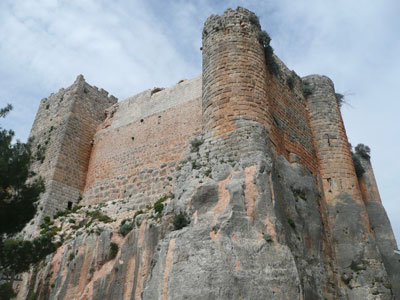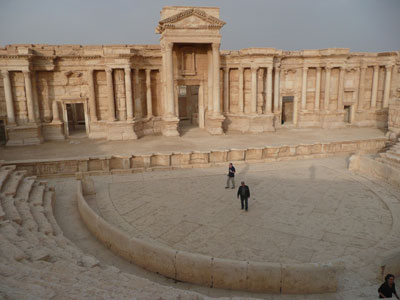Syria’s remarkable ruins
Syria isn’t often visited by Americans. My wife, Arlene, and I first traveled there in 1999 and were so impressed with the country’s historical, archaeological and biblical treasures that we decided on a repeat visit in February 2010.
We traveled with Voyages Jules Verne (21 Dorset Sq., London, NW1 6QE, U.K.; phone +44 20 7616 1000). The cost of our eight-night group tour, “From the Apostles to the Crusades,” was $3,281 each, which included air from London to Damascus. We upgraded our flights on BMI for $1,535 each. We spent four nights in Damascus, two nights in Homs and two in Aleppo.
The Roman theater in Bosra is, without a doubt, the most magnificently preserved ancient theater in existence today. It is truly a joy to behold. Bosra has remains of Roman, ancient Christian and Islamic structures.
In Palmyra, an oasis town in the heart of the Syrian desert, the ruins cover an extensive area and include the Temple of Baal, colonnaded streets, the amphitheater, monumental arches and the valley of the tombs.
Homs, the third-largest city in Syria, was the headquarters of the Knights Hospitaller, and their 11th-century stronghold, Crac des Chevaliers, is in a remarkable state of preservation and decidedly grand.
We visited one of the most impressive of Syria’s castles, that of Salah al-Din, then continued to Apamea, which was one of the most beautiful cities of the Hellenistic Orient. There have been many excavations revealing Roman ruins.
The covered suq in Aleppo’s Old City may be the largest in the Arab world. It is an amazing place, and being there in the midst of a multitude of shopkeepers, food vendors, gold merchants, donkeys, craftsmen and hucksters of all types is like being transported back in time.
A short distance west of Aleppo is the lovely, massive, fifth-century church of Saint Simeon Stylites, one of the masterpieces of Christian architecture, with four basilicas that radiate from the site where Simeon lived atop a pillar for nearly 40 years.
Syria is primarily an agricultural country with a small amount of oil and gas. A visit there is a revelatory experience, and, despite the bad press it receives in the US, we found the people friendly and the country very safe and clean, and we were extremely impressed that all religions are respected there.
BERNARD GOODHEAD
La Jolla, CA


